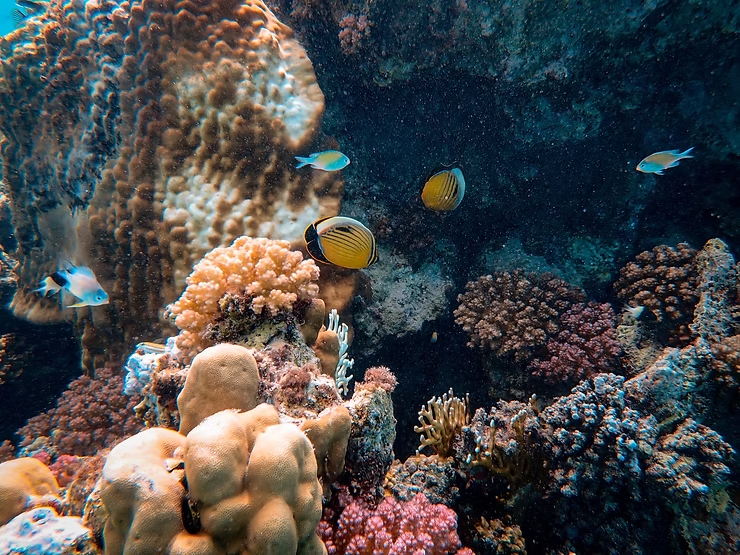Promoting Eco-Friendly Sunscreen for Coral Reef Protection
Encouraging the use of eco-friendly sunscreen is essential for protecting coral reefs, which are fragile and vital marine ecosystems. Conventional sunscreens containing harmful chemicals, such as oxybenzone and octinoxate, contribute to coral bleaching and disrupt marine life. By adopting reef-safe alternatives, we can safeguard these invaluable underwater habitats.
Key Reasons to Switch to Reef-Safe Sunscreens
1. Chemical Impact
Oxybenzone and octinoxate in conventional sunscreens can cause coral bleaching, inhibit growth, and disrupt reproduction in marine organisms.
2. Coral Reef Importance
Coral reefs are biodiversity hotspots that provide coastal protection, support fisheries, and generate significant tourism revenue.
3. Marine Biodiversity
Reefs house a quarter of marine species, making their health critical to the overall marine ecosystem.
4. Sunscreen Runoff
Conventional sunscreen chemicals wash off in water, negatively affecting nearby coral reefs.
5. Eco-Friendly Sunscreens
Reef-safe sunscreens are formulated with non-toxic ingredients that minimize harm to corals and marine life.
6. Mineral-Based Sunscreens
Sunscreens with zinc oxide or titanium dioxide protect skin effectively without damaging coral reefs.
7. Consumer Awareness
Educating the public about the harmful effects of conventional sunscreen encourages the adoption of reef-safe options.
8. Retailer Partnerships
Partnering with retailers to promote reef-safe products helps consumers make environmentally conscious choices.
9. Beach Resorts and Tour Operators
Encouraging resorts and tour operators to provide reef-safe sunscreen supports responsible tourism practices.
10. Legislation and Bans
Some regions have banned harmful sunscreen chemicals. Advocating for similar laws elsewhere can protect reefs.
11. Environmental Organizations
Collaborating with NGOs amplifies awareness campaigns and encourages reef-safe sunscreen use.
12. Sustainable Packaging
Choosing eco-friendly packaging contributes to overall environmental conservation efforts.
13. Celebrity and Influencer Endorsement
Influencers can raise awareness and motivate widespread adoption of reef-safe sunscreens.
14. School and Community Programs
Integrating reef conservation education in schools and communities promotes responsible environmental practices.
15. Research and Data Sharing
Continued research on sunscreen impacts reinforces the importance of eco-friendly options.
16. Government Initiatives
Incentives for producing and using reef-safe sunscreens support market growth and accessibility.
17. Personal Responsibility
Individuals can actively choose reef-safe sunscreen and educate friends and family about its benefits.
18. Travel Industry Collaboration
Collaborating with airlines, cruise lines, and travel agencies spreads awareness to travelers globally.
19. Product Innovation
Encouraging development of effective, convenient reef-safe products makes sustainable choices easier for consumers.
20. Long-Term Impact
Collective adoption of reef-safe sunscreen supports the long-term health and preservation of coral reefs for future generations.
Conclusion
Choosing reef-safe sunscreen is a simple yet powerful action that protects coral reefs and marine biodiversity. Through awareness, collaboration, legislation, and personal responsibility, we can ensure the survival of these vital ecosystems for generations to come.

